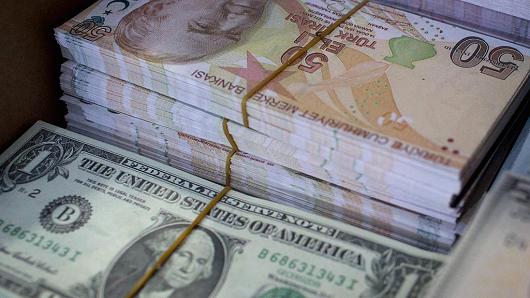Inflation report for 2012-2 by CBT
Inflation Report 2012-II
New data releases in the inter-reporting period indicate that the balancing process in the economy continues as envisaged. Accordingly, loan growth has slowed down significantly since the second half of 2011, thereby improving the current account balance remarkably. Domestic demand growth was controlled in this period, while the contribution of net exports increased markedly. In other words, the composition of growth assumed a robust outlook.
New data releases in the inter-reporting period indicate that the balancing process in the economy continues as envisaged. Accordingly, loan
growth has slowed down significantly since the second half of 2011, thereby improving the current account balance remarkably. Domestic demand growth was controlled in this period, while the contribution of net exports increased markedly. In other words, the composition of growth assumed a robust outlook.
Industrial production data regarding early-2012 indicate that economic activity was weaker than expected in the first quarter of the year. Nevertheless, this is considered to stem largely from temporary factors like unfavorable weather conditions and uncertainties regarding global economy. Hence, a mild recovery is expected as of the second quarter. Indeed, the upward course of the indicators on orders and consumption goods for February and March points that the decline in the economic activity is temporary. In the first quarter of the year, the indicators for the global economy and external demand were also in line with the expectations. Growth rates in both advanced and emerging economies continued to slow down, while the Euro Area growth outlook especially remained weak. In sum, the outlook for domestic and external economic activity remained broadly unchanged in the inter-reporting period. Accordingly, as in the previous reporting period, inflation forecasts are based on the assumption that the economy will assume a mild path of growth by the second quarter and aggregate demand conditions will continue to support the fall in inflation.
USD 115 per barrel for 2013. The contribution of this revision to the inflation forecast for end-2012 was 0.4 percentage points on the upside. On the other hand, in tandem with the decline in non-energy import prices, import price index displayed a better-than-expected course, pulling down the inflation forecast for end-2012 by around 0.2 percentage points. Meanwhile, import price projections based on commodity futures remained broadly unchanged in the inter-reporting period.
In sum, despite the better-than-expected prices in non-energy imports in the first quarter of the year, import prices slightly pulled up the inflation forecast for end-2012, due to the upward revision in energy prices, which have a stronger effect on the consumer price index. Meanwhile, the assumption for annual food inflation was maintained as 7.5 percent throughout the forecast horizon.
Fiscal Policy and Tax Adjustments
Regarding the fiscal outlook, the medium-term inflation forecasts take the revised projections of the MTP as given. Hence, the baseline scenario envisages that the ratio of primary expenditures to GDP will remain flat, and the structural budget balance will not deteriorate.
Moreover, the stipulated tax cuts and government incentives within the new incentive system, which was publicly announced on April 5, are considered to have no adverse effects on the fiscal balance.
Inflation and Monetary Policy Outlook
Forecasts are based on the assumption that additional monetary tightening will be implemented more frequently, and consequently, annualized loan growth rate will hover around 14 percent. Accordingly, inflation is expected to be, with 70 percent probability, between 5.3 and 7.7 percent (with a mid-point of 6.5 percent) at the end of 2012, and between 3.4 and 7.0 percent (with a mid-point of 5.2 percent) at the end of 2013. Inflation is expected to stabilize around 5 percent in the medium term.
04.06.2012
SOURCE: WEB PAGE CENTRAL BANK OF TURKEY





